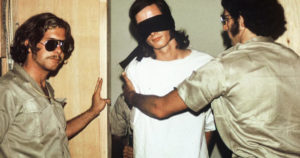
There is a fine line in the world of theater between performance art and reality. The greatest actors continually walk this line, testing the bounds of their abilities and the bounds of their viewers. Acting is defined as, temporarily doing the duties of another person, and based on this acting is so much more than TV, movies, and theater. Acting happens in many aspects of daily life and it allows us to be something or someone we are not, but again we have a fine line here of acting out of fun versus the criminal.
This idea of acting and “playing your role” was used by infamous psychologist Philip George Zimbardo when he conducted an experiment called the Stanford Prison Experiment in 1971. This research experiment tested the way individuals would act when placed into the roles of either prisoner or prison guard in a fake prison at Stanford University. The experiment was to last for two weeks but was terminated after only six days based on the criminal and abusive actions that happened within that short time.

During the experiment, those that were given the role of a prison guard to act as and quickly fell into their power position and used it to dominate, emasculate, and abuse their “prisoners”. The guards forced them to “do menial, repetitive work such as cleaning toilets with their bare hands” (Simply Psychology), and gave them numbers instead of using their names to dehumanize them. The individuals given the prisoner role quickly became submissive and afraid of the guards and would do anything to please them, even turn on other prisoners. The prisoners were treated like animals, and because of this constant abuse, they began to act like them too. The line of self and who they believed they were supposed to be, merged and their acting became their reality.
This experiment is a piece of art in a certain lens, but the line between art, science, and crime was crossed. As of today, this experiment is looked at as one of the most unethical uses of power, dominion, and abuse of an individual’s rights. All because these regular people were just playing their roles, but it was so much more than that. They did not just play their roles, they became them, and in turn, the art of acting became criminal.
Sources:
Konnikova, Maria, and Nicholas Lemann. “The Real Lesson of the Stanford Prison Experiment.” The New Yorker, 12 June 2015, https://www.newyorker.com/science/maria-konnikova/the-real-lesson-of-the-stanford-prison-experiment.
Mcleod, Saul. “The Stanford Prison Experiment.” Stanford Prison Experiment | Simply Psychology, https://www.simplypsychology.org/zimbardo.html.






